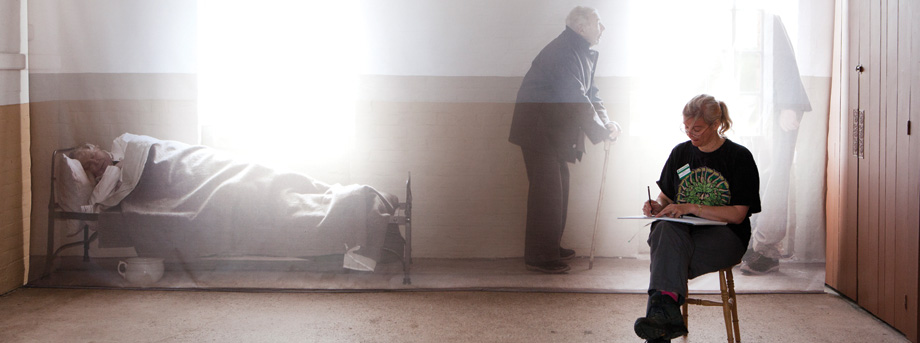Unexpected find sheds new light on historic town
October 19th, 2011
They came expecting to find Romans but what they discovered could revolutionise our understanding of the historic cathedral town of Southwell in Nottinghamshire.
A team of archaeologists from the University think they may have discovered the remains of an Anglo-Saxon defensive enclosure and planned town. For the first time they believe they have the evidence which links the well-documented Roman settlement at Southwell to the later medieval Minster site.
This summer, a small army of academics and students got permission to dig for Romans at the bottom of people’s gardens. The two-week dig also involved a detailed archaeological building survey of the country’s most complete workhouse. Built in 1824 and now owned by the National Trust, Southwell Workhouse was the prototype for all future union workhouses and it is the most complete one of its kind to survive.
In their search to find out more about Southwell’s Roman settlement and how the town evolved over the centuries, the archaeologists discovered what they believe is an ancient Burh — an Anglo-Saxon enclosure around the historic core of the cathedral town.
The remains of ancient banks and ditches still survive today, but a test pit near one of these banks revealed a ditch which contained small fragments of pottery that have got the archaeologists determined to come back and find out more.
Dr Naomi Sykes, a lecturer in Zooarchaeology, who led the two-week dig said: “We excavated all manner of finds from this ditch, including modern-day pottery. In the same area we found bits of Roman motaria – ancient Roman pottery kitchen vessels. But further down in the earlier deposits we discovered fragments of medieval pottery.
“This exciting find ties the Roman site to the later Medieval Minster site and suggests that there was settlement activity and buildings around that period.”
Dr Chris King, a lecturer in archaeology, said: “We’ve only had a short time to dig and it has left us with many more questions that need answering.
“The people of Southwell have laid their gardens open for students to come and dig large holes in them but they are very excited about our discoveries and we are already making plans to return next summer to continue the work.”
The team was returning to Southwell Workhouse on the weekend of 1 and 2 October to dig another series of test pits with the help of the Southwell Community Archaeology Group. The aim this time is to help piece together the history of the workhouse and hopefully tell them more about the history of Southwell itself.
Dr King said: “Southwell Workhouse is a site of national importance and we hope that archaeology can shed new light on life in the workhouse as well as the earlier history of the town.”
Tags: archaeology, Dr Chris King, Dr Naomi Sykes, Southwell, Southwell Community Archaeology Group, Southwell Workhouse, Zooarchaeology
Comments are closed.
Other News

Need news? See you on SharePoint
After 14 years of service, Campus News is being retired as the university’s staff news platform. […]

Roads and car parks closed for refurbishing work
As part of ongoing road improvements at the university, works will be taking place to resurface […]


